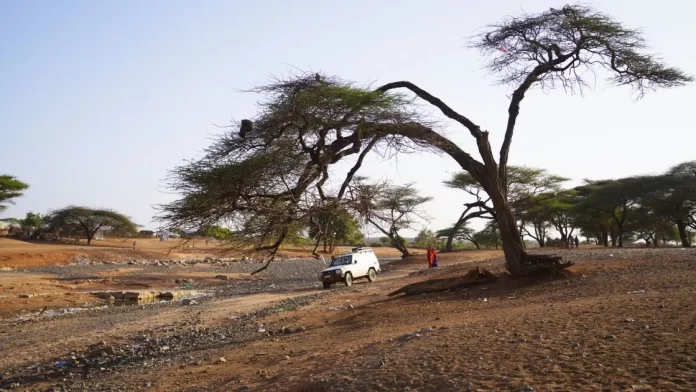In Ethiopia, Kenya, Somalia and South Sudan, the worst drought conditions in more than 40 years continue to cause devastation for millions of vulnerable people.
Close to 40 million people are still facing high levels of food insecurity in the region, with the number of internally-displaced people (IDPs) continuing to grow as the search for sources of food and water goes on.
In Somalia, for example, more than one million people have been forced to leave their homes since January 2021 in the desperate hope of staying alive.
This remains a crisis of catastrophic proportions.
“We are not out of the woods yet in the Horn of Africa,” says Amina Abdulla, Concern’s Regional Director for the region.
“Whereas some of the countries have registered good amount of rains, the level of food insecurity remains high due to the loss of livelihoods from the prolonged drought period.
“It will be a while before we see an impact on food security from the current on-going rains in Kenya and Ethiopia.
“Somalia, on the other hand, has not registered much [in terms of] rains and the famine alarm bells are still on for some parts of the country.”
Somalia – 8.25m people experiencing food insecurity
Somalia is seeing its worst drought in more than four decades. The threat of famine hangs over the Somali people, in a country that has registered even less rainfall in recent months than its nearest neighbours.
This lack of rainfall, as well as the fallout from the Covid-19 pandemic, desert locusts decimating food supplies and the ongoing effects of the crisis in Ukraine – Somalia gets 90% of its wheat from Ukraine and Russia – has contributed to a dire situation in which food insecurity is affecting 45% of the population.
Millions of people, many of whom are children under the age of 5, are living under the very real threat of serious illness and death as a result of malnutrition.
Kenya – 6.4m people experiencing food insecurity

In Kenya, according to the World Food Programme (WFP), unpredictable rainfall and recurring droughts have caused critical disruption to crops and the erosion of soil.
A massive 95% of crops in Kenya are rain-fed, so the recent drought have led to further inefficiencies in an already volatile food system, with high prices and scarcity seriously limiting the access to food for the country’s most vulnerable people.
In Northern Kenya, approximately 95% of surface water sources ran dry as the rains stayed away; meanwhile, recent rains are not expected to impact the food supply for some time yet.
With 6.4m people not always knowing where their next meal is coming from, more than the entire population of Ireland will be in very real danger of starvation by the end of 2023.
Ethiopia – 17.2m people experiencing food insecurity
In Ethiopia, more than 24 million people are living in the areas most affected by five consecutive failed rainy seasons, and the situation continues to be extremely precarious for entire communities who are facing starvation due to food shortages.
Millions of livestock have perished since 2021, while rains continue to be erratic in many parts of the country.
Furthermore, already depleted livelihoods have been further endangered by water and pasture shortages, particularly in the east and the south of the countries.
What is Concern doing in East Africa?

Across the region, we continue to work to support people whose lives have been threatened by the drought conditions.
Our activities in the region include, but are not limited to:
- Providing cash support for vulnerable people
- Supporting healthcare workers in the screening and treatment for severe acute malnutrition
- The trucking of water, rehabilitation of hygiene facilities such as boreholes and latrines, promotion of best hygiene practices and the distribution of hygiene kits
- Distributing food, non-food items and emergency livestock feed
Amina Abdulla believes it is essential for supporting organisations and nations to address resilience to climate shocks, “if we don’t want to go back to the situation we had in 2021/2022 two years from now.”
She added that the situation in Sudan – where violence broke out on April 15th, sending thousands of people across the country’s border – “will exacerbate the situation due to the high number of people displaced internally, as well as across the different countries in the region.”

